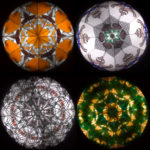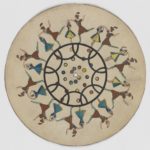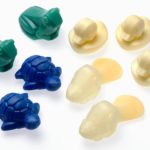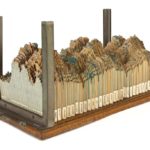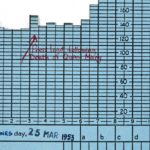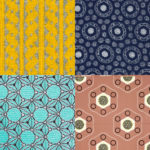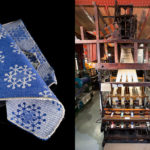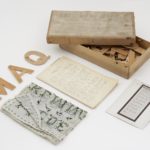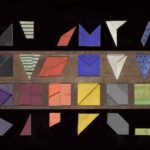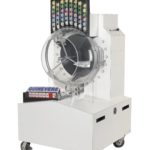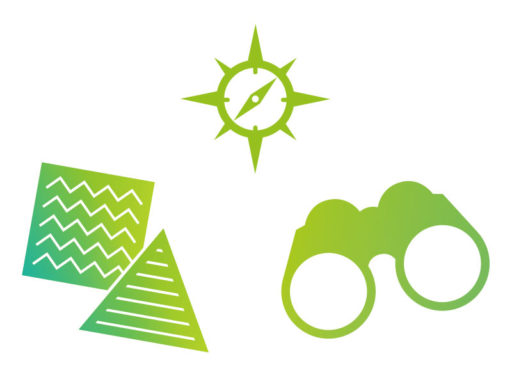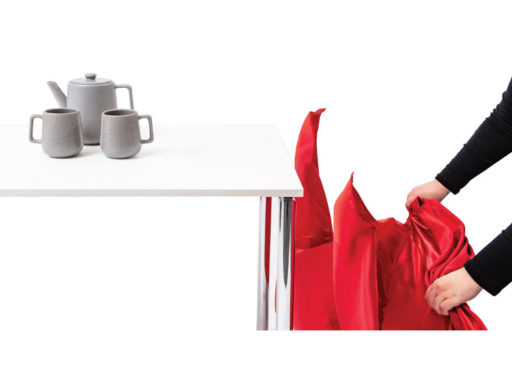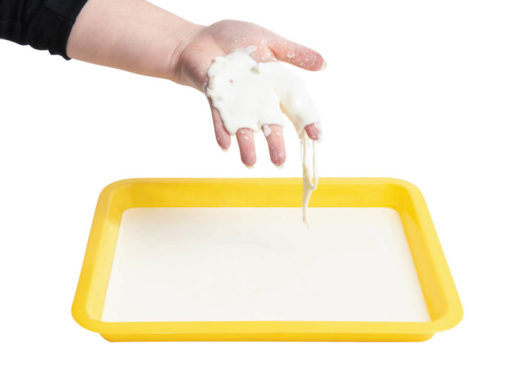Stripes on a knitted jumper, the rhythm of lessons on a school timetable, spots on a leopard’s skin… Wherever something repeats over and over again, you will find a pattern. The objects in this image bank showcase the many ways we can find and interpret patterns.
Mathematical patterns and sequences are all around us, waiting for people to sniff them out and use them to understand the world. Spotting a pattern is not only pleasing in itself: it can also lead us to ask interesting questions about how and why the pattern happened, which can help us make calculations and solve problems.
From geometry to algebra to numbers, finding and playing with patterns can help us work mathematically and make sense of the world.
Highlighting the patterns in both familiar and unique museum objects helps to increase awareness of how full of patterns our everyday lives are and how patterns are useful to us.
Images in this resource
Note
Click the thumbnails to skip to the full pictures.
Using images in your classroom
Our Science Museum Group museums are full of amazing objects which are all examples of how STEM (science, technology, engineering and maths) has changed our everyday lives.
You can use images:
- To hook students’ interest at the start of a lesson or to introduce a new topic.
- To highlight the relevance and practical applications of school subjects in our everyday lives.
- As part of a discussion to explore the stories of the people who have shaped the world we live in through their passion and creativity.
- As mystery objects to get your students using their STEM skills such as observation, using prior knowledge and asking questions.
- To create a display of applications of maths in your classroom, connecting past, present and future examples of technology.
- In a pre-visit activity to familiarise students with some of the objects and themes they will find in the Science Museum.
talk about…
Use these questions to help spark discussion with the different images:
- Where can we see, hear and feel patterns in our daily lives?
- How can patterns be useful to us?
- What do these photographs not tell us?
- What would you like to know more about? How could you find out more?
Kaleidoscope interiors

Kaleidoscopes like this ‘Brewster’s patent’ version have been popular toys since the early 1800s. Colourful beads tumble inside the tube. Small mirrors set at angles repeat the image of the beads to make beautiful symmetrical patterns.
Think and talk about…
Why do you think the kaleidoscope, a very simple toy, is still popular?
Back to top
Phenakistoscope
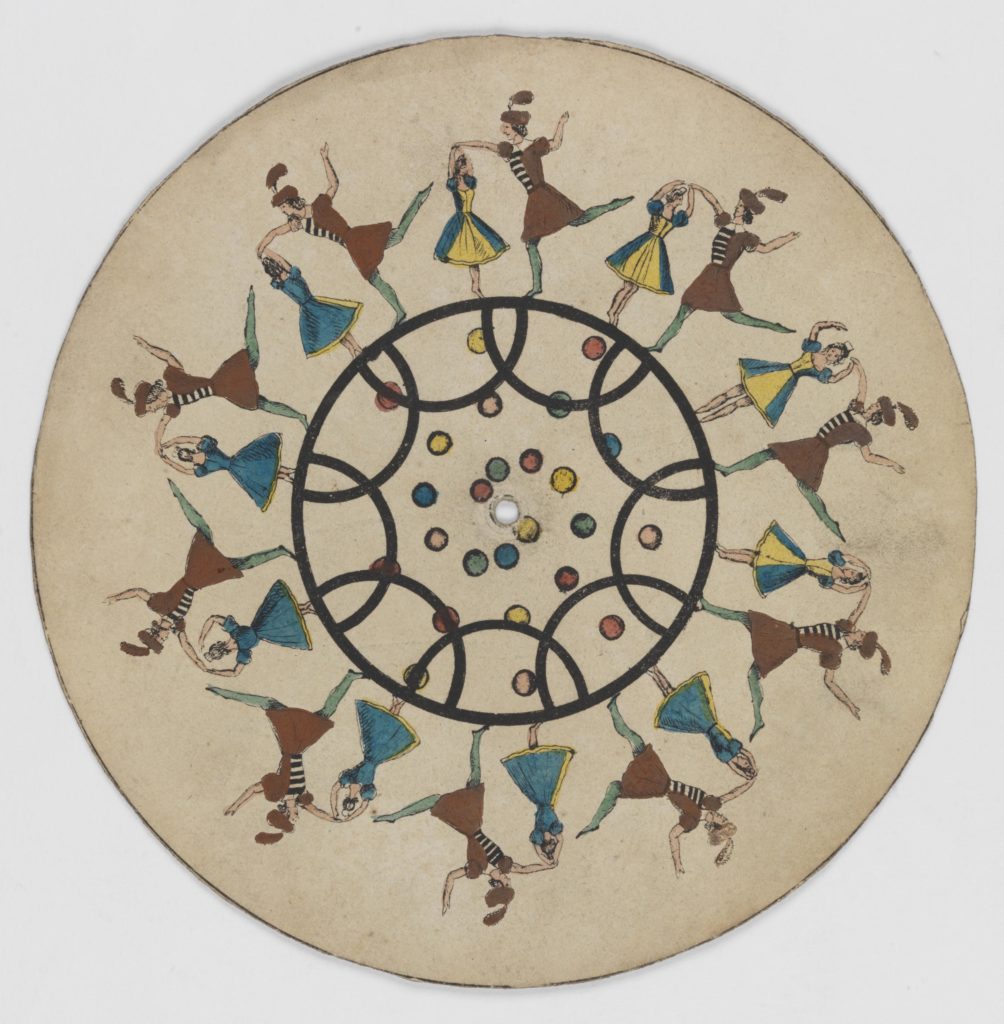
This painted disc is part of a toy called a phenakistoscope. If you spin the disc in front of a mirror and observe the reflected images through the small slits cut into it, the images appear to be animated.
The dancers on the disc here change very slightly in each illustration. Spinning the disc repeatedly creates the pattern of the same dance move, over and over again.
Think and talk about…
If you were to make a simple repeating pattern like this dance, what would you choose to do?
Back to top
Bath toys: ducks, frogs and turtles
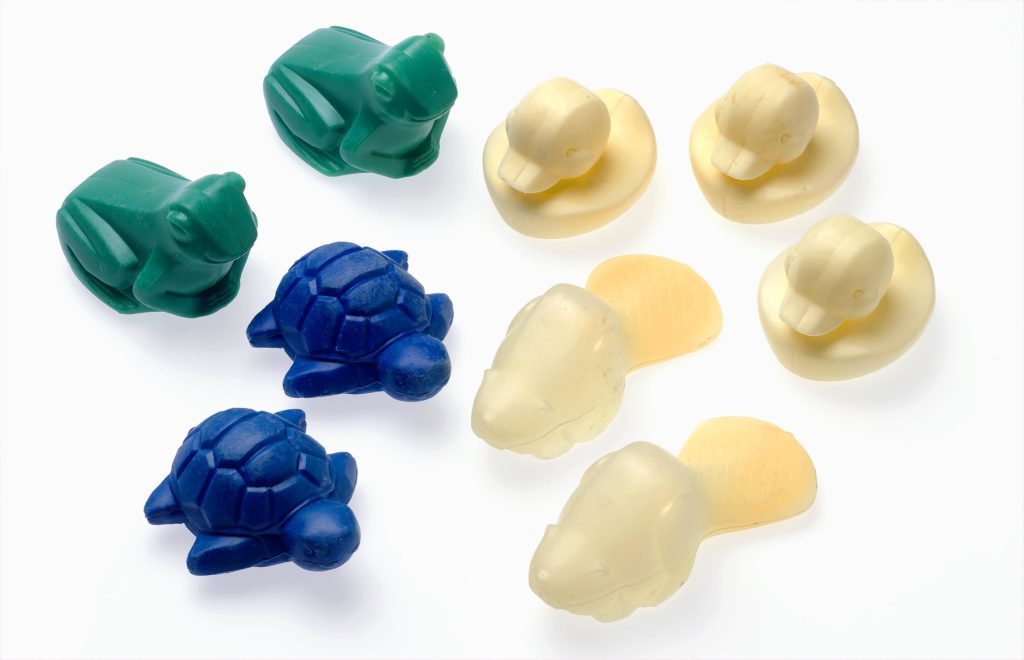
In 1992 thousands of these Friendly Floatees bath toys fell off a ship in the North Pacific Ocean. They were found washed up all over the world, including in Hawaii, the continental United States, Ireland and Britain. Ocean researchers used the toys’ accidental journeys to track ocean drift patterns.
Think and talk about…
Why do you think we are interested in learning about ocean current patterns?
Back to top
3D electrical usage charts
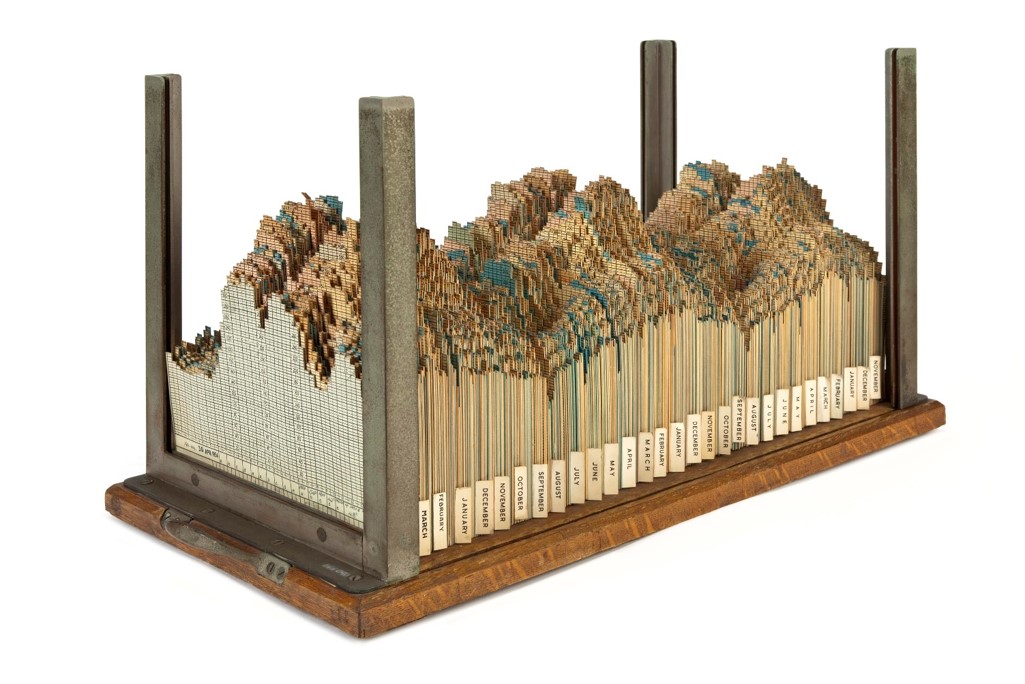
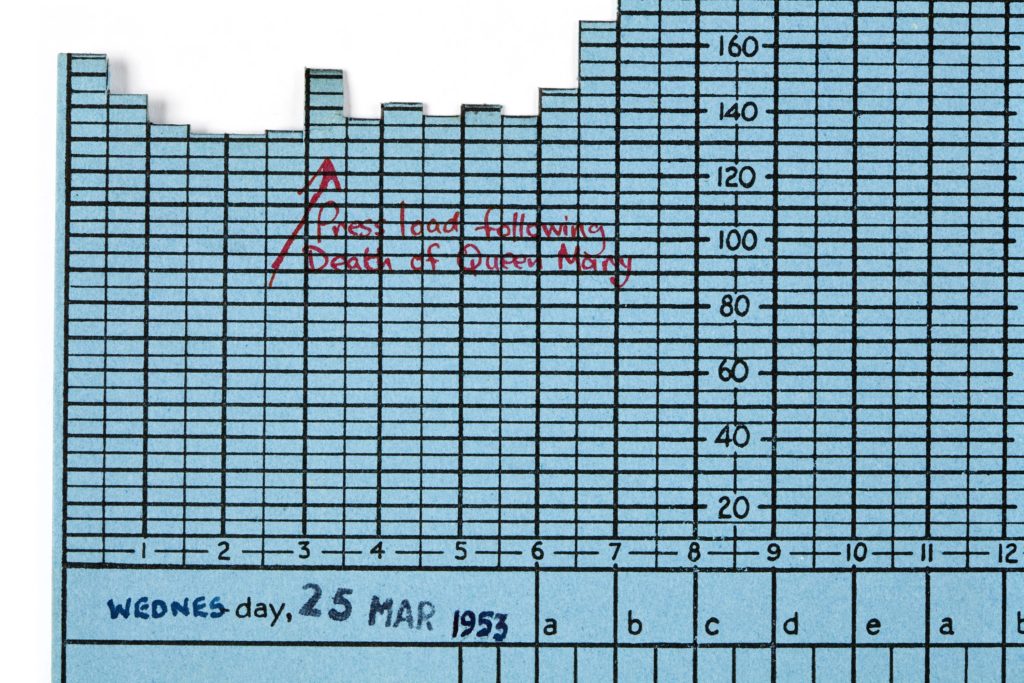
Monitoring electricity usage is important in ensuring we generate enough of it. This 3D model represents electricity use between 1951 and 1954 in the UK. There are breaks in the pattern such as a spike on 25 March 1953 as people tuned in to the radio to hear about the death of Queen Mary.
Think and talk about…
What would a model of your own electricity usage look like?
Back to top
Festival of Britain fabrics

Special patterns for teacups, wallpaper and clothes were made for the Festival of Britain, a huge exhibition on London’s South Bank in 1951. These were not random patterns: the designs came from the microscopic world, in this case the shapes of molecular structures. Anti-clockwise from bottom left: china clay (turquoise), insulin (pink), haemoglobin (blue) and mica (yellow).
Think and talk about…
Where might you find patterns using a microscope? Are there patterns in a leaf? Or in an insect’s wing?
Are these images science or art, or both?
Back to top
Jacquard sample, ribbon loom
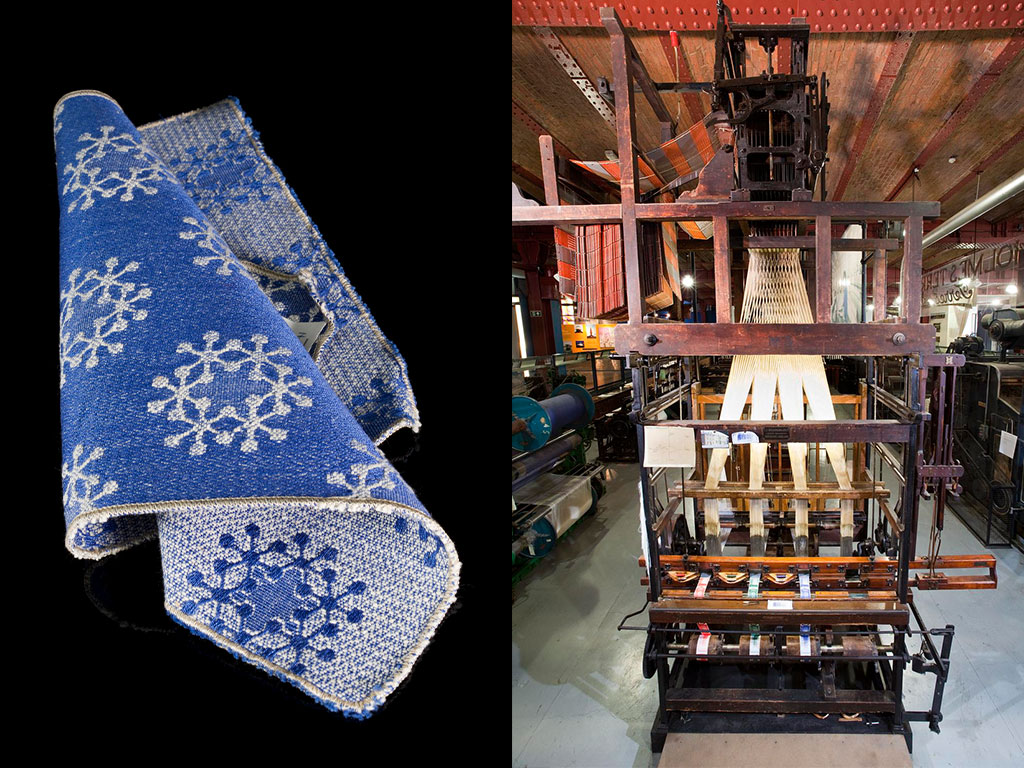
Jacquard fabrics were made by fitting Jacquard devices to the tops of ordinary looms. They used punch cards (pink, top left of loom photo) to programme which threads should be raised and which threads should weave under them. Jacquard looms could quickly and repeatedly reproduce fabric with any pattern a designer could imagine.
Think and talk about…
Why is it sometimes important to be able to recreate the exact same pattern again and again
What kinds of patterns would you like to weave into your own clothes or blankets?
Back to top
Face pattern paddles
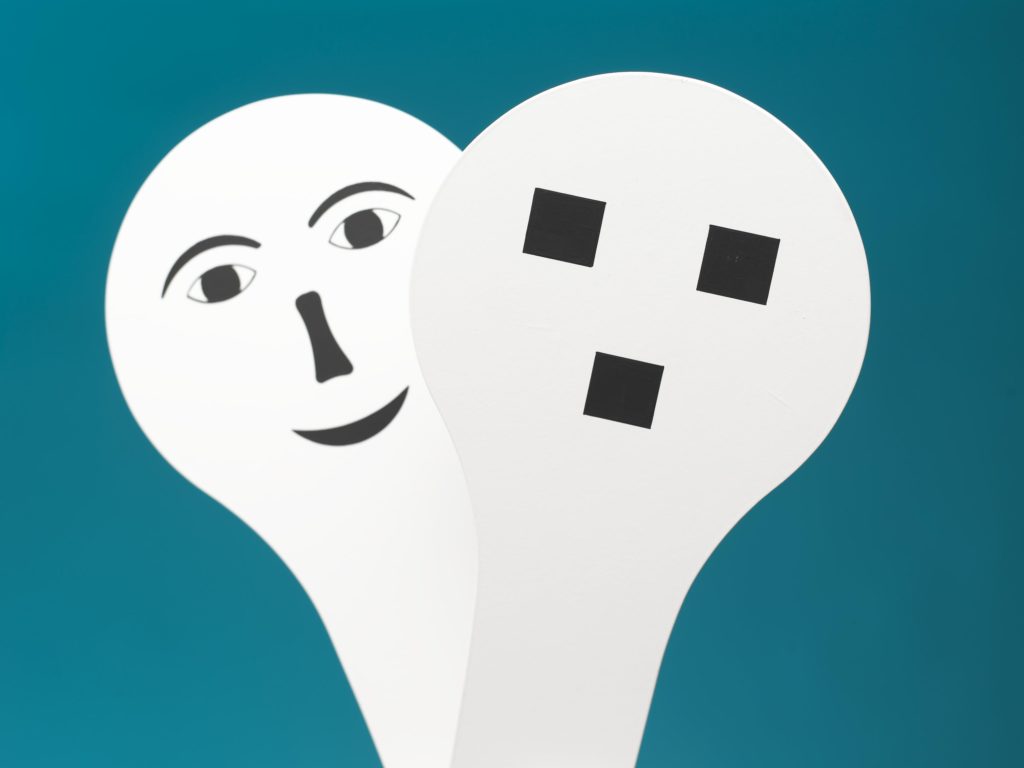
Recognising patterns is an important skill for humans right from the start. University researchers used these paddles to test how well newborn babies could recognise the patterns of the face. Using patterns to recognise familiar faces and understanding different emotional expressions helps us survive.
Think and talk about…
How would you recognise your friends and family if you could not see their faces?
Humans also have patterns in their behaviour. What could some of those patterns be?
Back to top
Braille teaching set
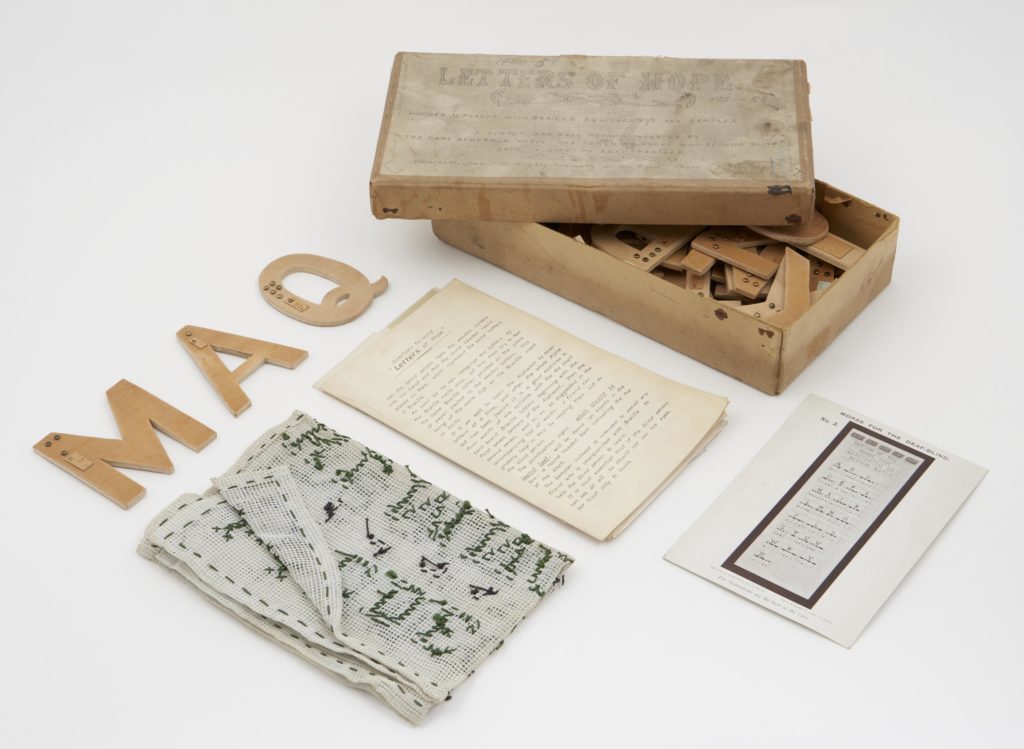
Some patterns can be decoded with our fingers. Braille is a system of raised dots that allows people to read with their sense of touch. The wooden teaching letters shown here allow people to feel both the shapes of standard alphabet letters and each letter’s unique Braille pattern.
Think and talk about…
Which other patterns can be read with touch? Embroidered cloth? Engravings? Human faces?
Back to top
Chocolate packing test
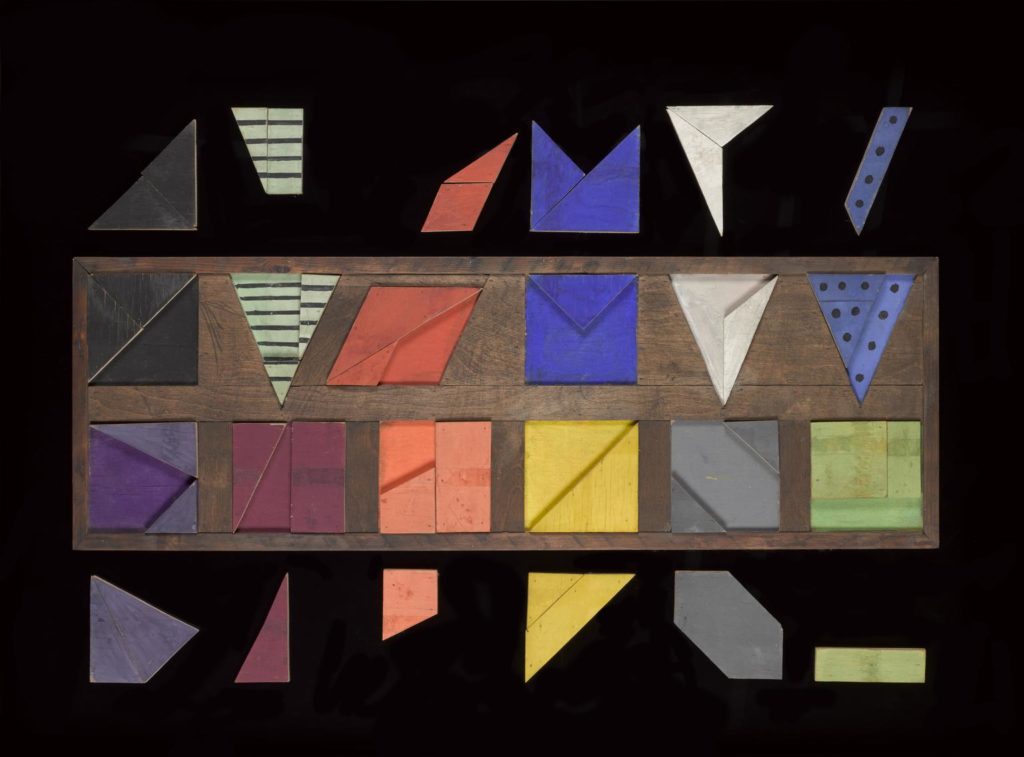
Three minutes to perfectly pack a box of wooden ‘chocolates’: that is the test that hopeful Rowntree chocolate-packers were given in the early 1900s. To be chosen, they had to quickly understand the patterns of the colourful wooden pieces and the way they best fit into the box.
Think and talk about…
Why do you think that speed and pattern recognition were valuable skills in a chocolate factory? Where else can speedy pattern-spotting be useful?
Back to top
Guinevere lottery machine
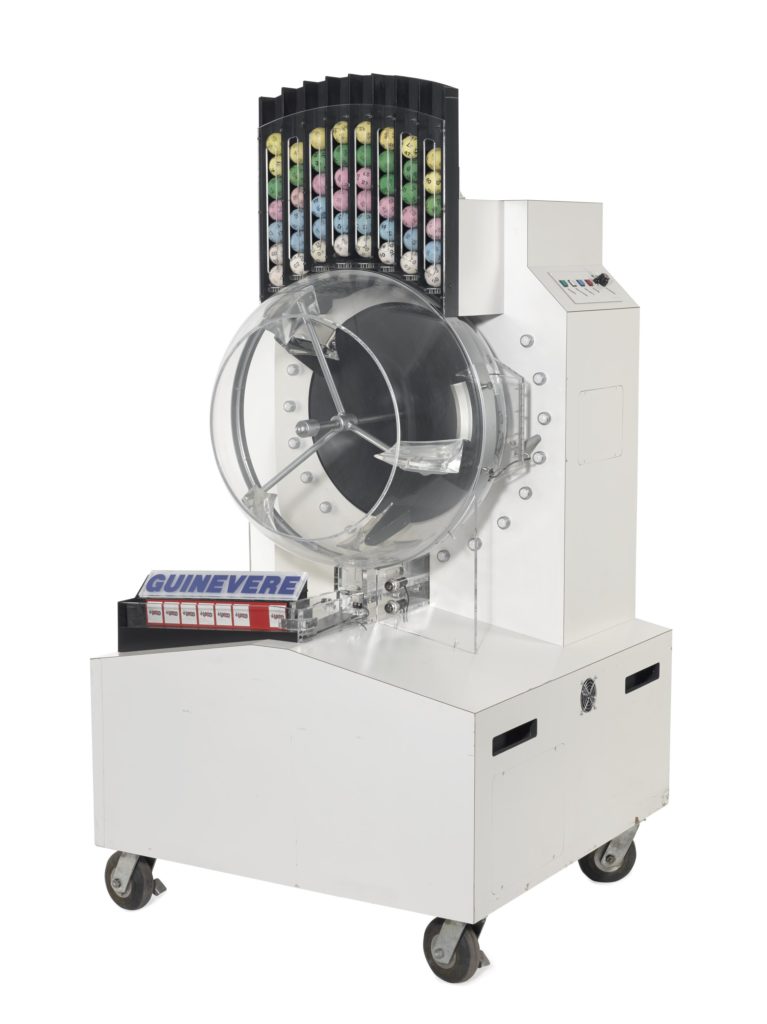
What’s the opposite of a pattern? The answer is randomness.
It’s challenging to create a machine that selects random numbers, but Guinevere did exactly that. Guinevere was programmed to create sequences of numbers for the National Lottery that would be impossible to predict and difficult to guess.
Think and talk about…
Without a machine like Guinevere, what other ways could you use to generate a list of random numbers?
